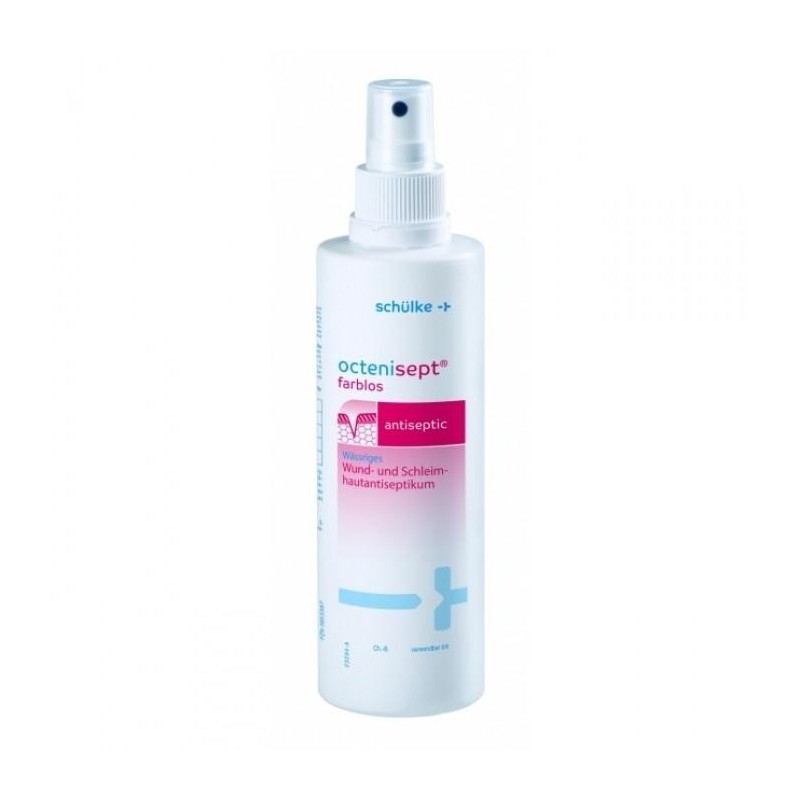



Antiseptic.
It is active against gram-positive and gram-negative bacteria, lipophilic viruses (for example, the Herpes simplex virus and hepatitis B virus), as well as against yeast-like fungi and dermatophytes.
- treatment of skin and mucous membranes before diagnostic and operational activities in pediatric, surgical and obstetric and gynecological practice, in traumatology, proctology, dermatology, otolaryngology, dentistry;
- treatment of wound and burn surfaces;
- prevention of mycoses of feet and interdigital mycoses.
| Solution for local and external use | 100 ml |
| octenidine dihydrochloride | 0.1 g |
| phenoxyethanol | 2 g |
| excipients: cocamidopropyl betaine; sodium D-gluconate; glycerol 85%; sodium chloride; purified water |
Octenidine dihydrochloride is marketed under different brands and generic names, and comes in different dosage forms:
| Brand name | Manufacturer | Country | Dosage form |
|---|---|---|---|
| Octenisept | Schülke and Mayr | Germany | spray |
| Octenisept | Schülke and Mayr | Germany | bottle |
No customer reviews for the moment.
Topically, locally.
The treatment is carried out alternately with two tampons abundantly moistened with Octenisept. The affected surface must be completely treated. On easily accessible areas of the drug can be applied by spraying. The exposure time is at least 1–2 minutes.
Dressings are applied after complete drying of Octenisept (ie, after 1–2 minutes). Before using the preparation, the tissue sections to be treated must be cleaned of pus or other biosubstrates.
20 ml of the preparation is used for rinsing the oral cavity, it is recommended to re-rinse after 20 s.
For the prevention of fungal diseases, the skin between the toes and feet is treated with the drug 2 times a day (morning and evening). Duration of treatment up to 14 days.
Perhaps a brief burning sensation at the site of application. When rinsing the mouth, a bitter taste is possible.
Hypersensitivity to the drug.
Do not use with iodine-containing antiseptics.
In children's practice - without age restrictions.
Do not swallow. Not recommended for use on the eardrum.
Studies and clinical trials of Octenidine dihydrochloride (Click to expand)